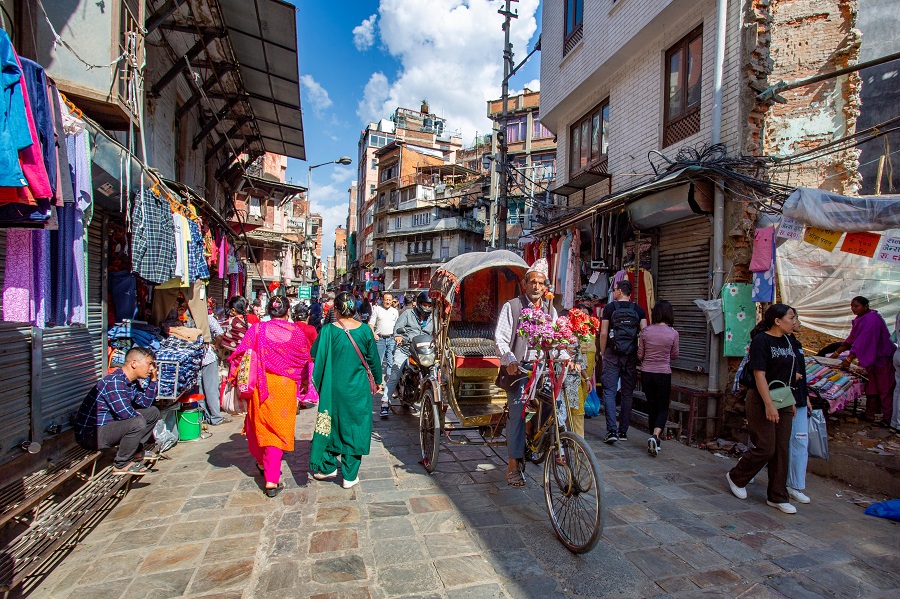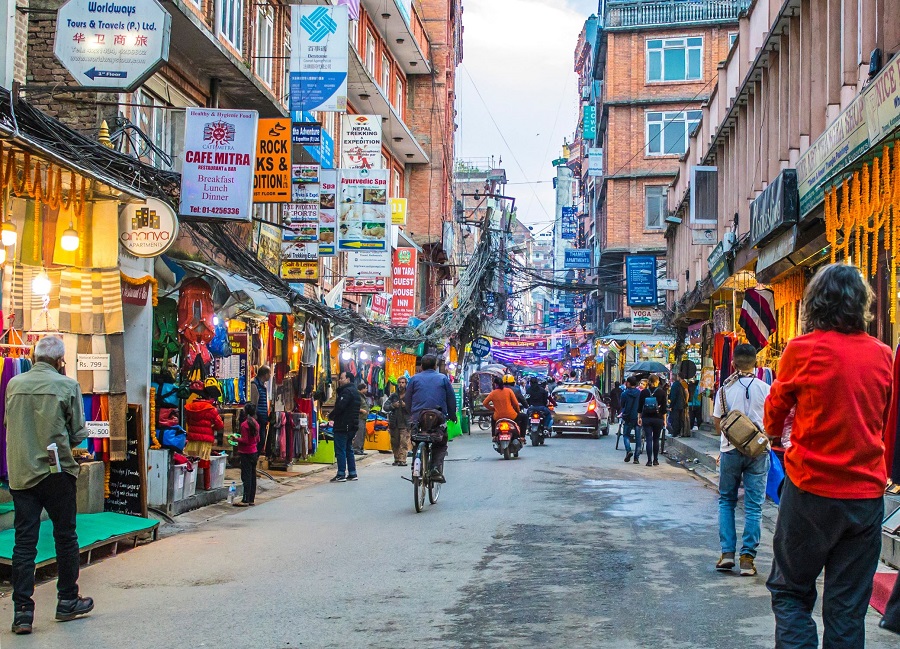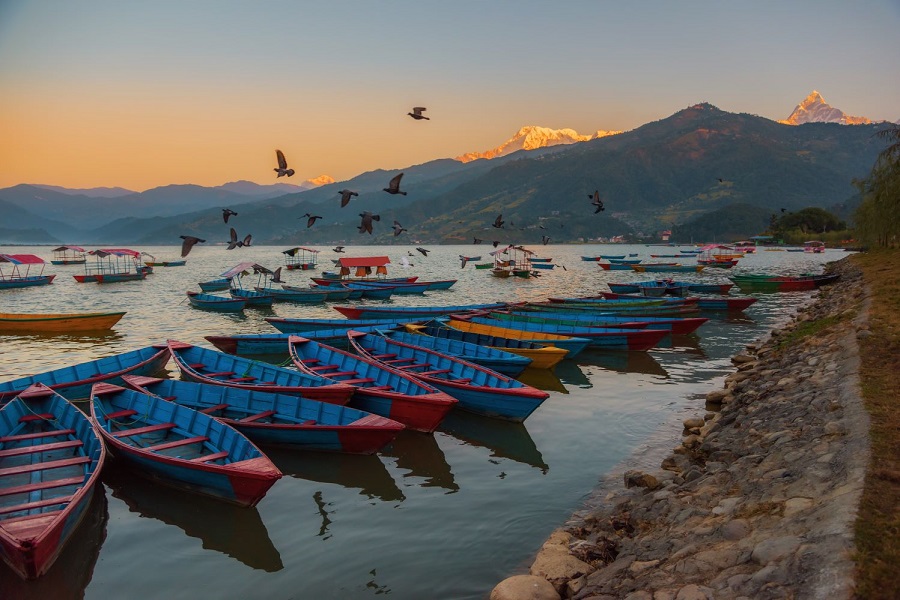DUBAI: Nepal is best known as the entry point to the Himalayas and Mount Everest, but this beautiful country actually provides a host of options for all kinds of travelers — even those with no desire to summit a mountain.
From the bustling streets of Kathmandu and the tranquil lakeside views of Pokhara set against the Himalayas to the nature reserves of Chitwan National Park and the hilltop peace of Bandipur, Nepal is a treasure trove of all things travel — and that’s true whether you’re a backpacker travelling on a budget or a family looking to unwind.

A street in Kathmandu. (Shutterstock) fthaem
Our two-week trip to Nepal began in Kathmandu, and my husband and I opted to stay in the famed Thamel tourist district. Thamel is where you want to be if you love all things food, drinks, art, music and shopping — although it’s a shock to the senses if you’re not used to busy South Asian city life. There are dingy tattoo parlors, storefronts offering rows and rows of beaded jewelry and miscellaneous art, live music blaring from every drinking establishment (and there’s one every five steps you take), and the best street food you’ll ever taste — if you have the stomach for it.
Speaking of food, we ate momos (Nepal dumplings) for breakfast, lunch and dinner because no two places make it the same and they are all great. Shout out also to Thamel House Restaurant for the best traditional Nepali thali (platter) we had during our stay. ,

Thamel, Kathmandu. (Shutterstock)
We also took a day to explore the neighboring town of Patan. Once an independent city-state, it’s now considered a natural extension of Kathmandu. Its main attraction is Darbar Square, a UNESCO World Heritage Site where you will find a collection of ancient Hindu temples and palaces. After exploring the main square, you can head to a nearby rooftop café for beautiful views of the town.
No visit to Kathmandu is complete without a trip to the Swayambhunath Stupa — known locally as The Monkey Temple, for reasons that become immediately apparent when you visit. Be warned: the monkeys will try to steal anything you’re carrying, so they can trade it back to you for food. And these guys are sneaky.
The trek to the stupa involves climbing exactly 365 steps but the sprawling view of Kathmandu from the top, and the tranquil vibe of the temple itself, are well worth the climb.
Our next destination was Pokhara, the gateway to the Annapurna Circuit, a famed trail in the Himalayas, popular with hippies, vagabonds and of course, trekkers of all kinds.
But trekkers we are not. We’d arrived in the beautiful postcard-perfect lakeside town for some well-earned downtime. And some uptime — I decided to get in touch with my mortality with a thrilling paragliding session over the gorgeous Phewa Lake, which brilliantly mirrors the mountains set against it.

Phewa Lake Pokhara. (Shutterstock)
We also spent an unforgettable afternoon kayaking there. If you venture out far enough, it really seems like it’s just you, the water, and the mountains.
It’s tempting to simply stay around the lake, but it’s well worth exploring Pokhara’s Old Town with its many ancient temples and traditional architecture.
Next, we spent three days in the cozy little hilltop village of Bandipur, immediately appreciating the total absence of tooting horns and exhaust fumes — motorized vehicles are banned within this historic hidden gem of a town, which was once an important stop on the Tibetan trade route. Its center consists of a single cobblestoned street, flanked on both sides by 18th-century buildings painted in pastel colors reminiscent of quaint little European towns. And there are a few old Hindu temples to be found too.
Most of Bandipur’s buildings have been restored, and are now quaint guesthouses and/or cafés. We stayed at The Old Inn, a charming traditional guesthouse with a terrace that has breathtaking views of the Annapurna range and the valley below Bandipur.
While our stay at Bandipur was mostly focused on enjoying its bougainvillea-draped coffee houses, leisurely strolls through the town, and sampling baked goods and traditional thalis, we also made time for a short hike uphill to the Thani Mai temple around sunset, where we were rewarded with more beautiful views of the town from above, bathed in golden light.
And just like that, even though Bandipur was added as a hasty afterthought to our itinerary, it became our favorite stop of the entire trip.





















